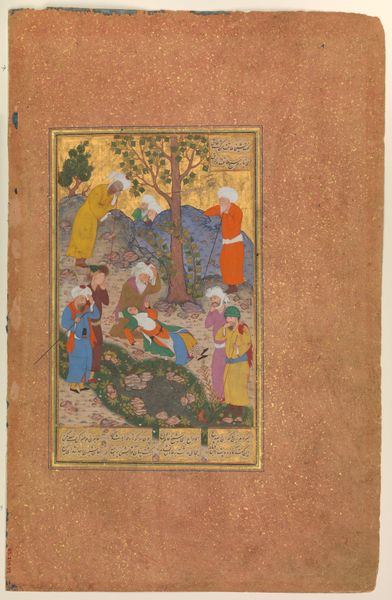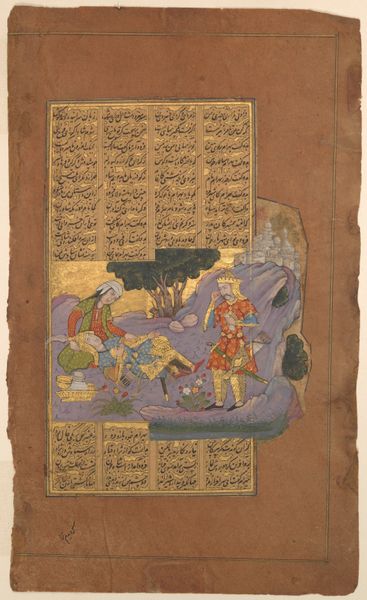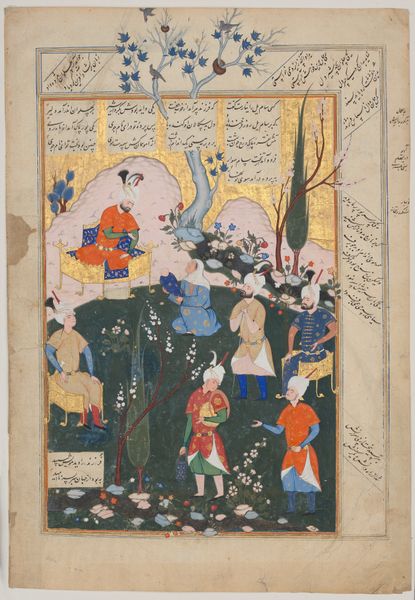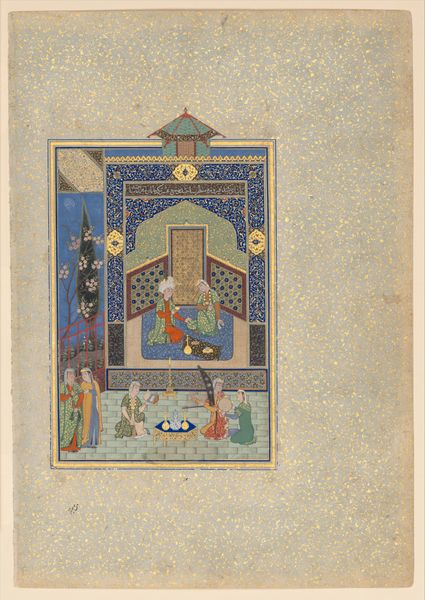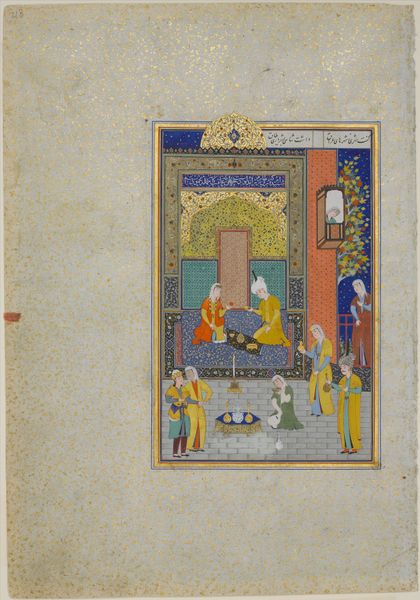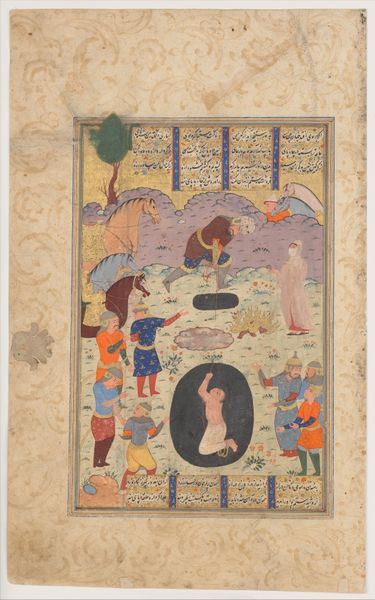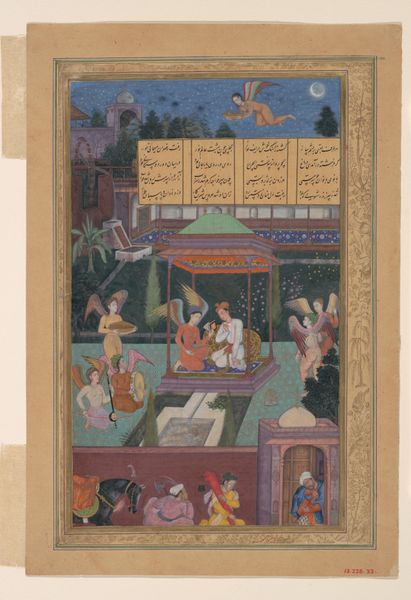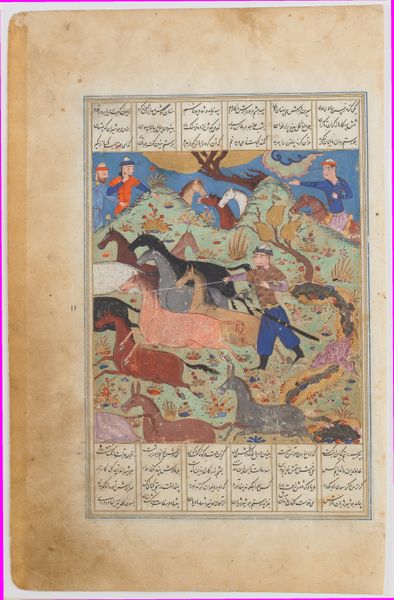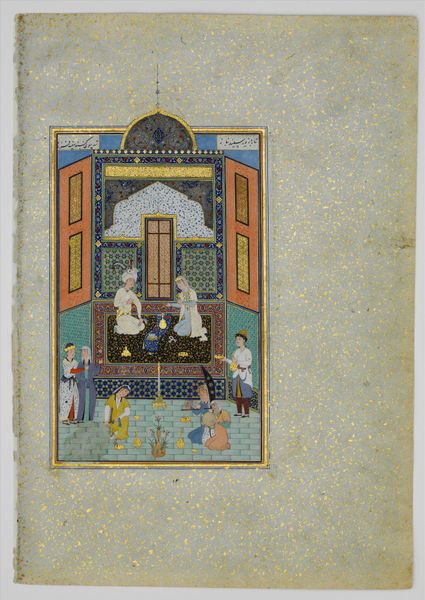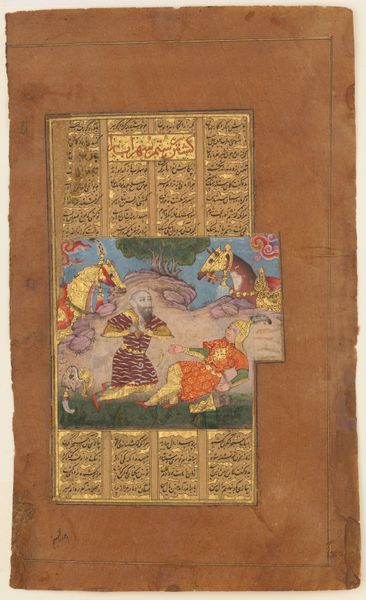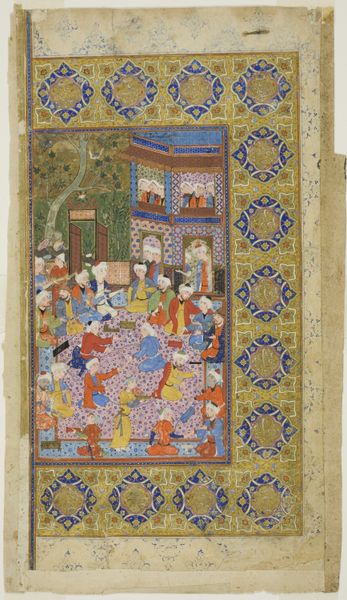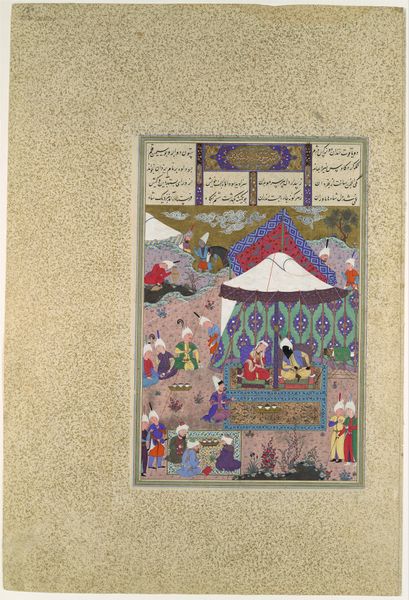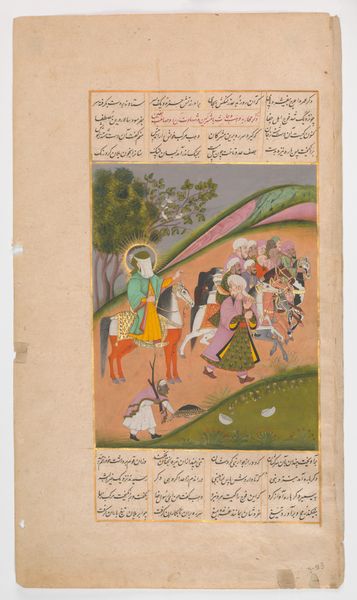
"Alexander at a Banquet", Folio 321b from a Khamsa (Quintet) of Nizami of Ganja 1500 - 1550
0:00
0:00
painting, watercolor
#
portrait
#
painting
#
watercolor
#
coloured pencil
#
men
#
islamic-art
#
musical-instrument
#
miniature
Dimensions: Painting: H. 6 11/16 in. (17 cm) W. 4 1/2 in. (11.5 cm) Page: H. 12 1/2 (31.7 cm) W. 8 3/4 in. (22.2 cm) Mat: H. 19 1/4 in. (48.9 cm) W. 14 1/4 in. (36.2 cm)
Copyright: Public Domain
Curator: I find this miniature utterly enchanting, like a glimpse into a dream of kings and poets. Editor: Well, that’s fitting since what we're looking at is “Alexander at a Banquet,” specifically folio 321b from a Khamsa, or Quintet, of Nizami of Ganja, created sometime between 1500 and 1550. It’s currently housed at the Metropolitan Museum of Art, painted with watercolor. But enchanting? That’s quite the entry! Curator: Isn’t it? It has this wonderful stillness about it, despite all the activity. And that dreamy palette—the golds and greens just melt together. I am immediately drawn to that central figure in white. Such an iconic representation! Editor: It’s all carefully placed, right? Think of the composition: the positioning of Alexander in white against the cooler blues and greens, how his towering hat directs our gaze... There is almost a hierarchy of colour. Do you see what I mean? Curator: Absolutely! It's all carefully constructed—a microcosm of power, pleasure, and probably politics too. That flowing stream seems almost too precious, don’t you think? Editor: Water often symbolizes life, purity, passage. But it is just one piece here—aren’t those musicians a telling clue? They occupy the same space but exist below and subservient to the ruling class and Alexander. And it does reinforce something of this idealized vision of courtly life, a common theme in Persian miniatures. Curator: Yes, there's a delicate balance between luxury and… I don’t want to say oppression, but the implied difference is there. It's like peering into a world both familiar and profoundly distant. You can tell me all about iconography, but those figures playing instruments are, perhaps foolishly, reminding me to play music and feel closer to this faraway space and place. It's magical! Editor: Agreed. Magic made from meticulously placed details. The image manages to conjure an entire cultural ethos within such a contained space—a testament to the enduring power of symbols to transcend time and speak across cultures. Curator: So beautifully said, as always. Perhaps what strikes me is how art itself, like this piece, creates a portal to the past—inviting us to imagine and to feel alongside figures from history. Editor: Leaving us to ponder on the universality of the human experience… the feasts, the music, and the powers that be.
Comments
No comments
Be the first to comment and join the conversation on the ultimate creative platform.
